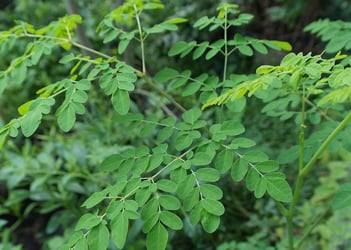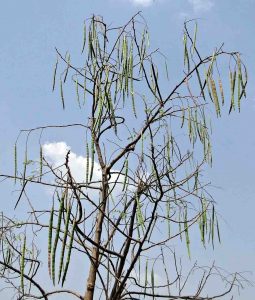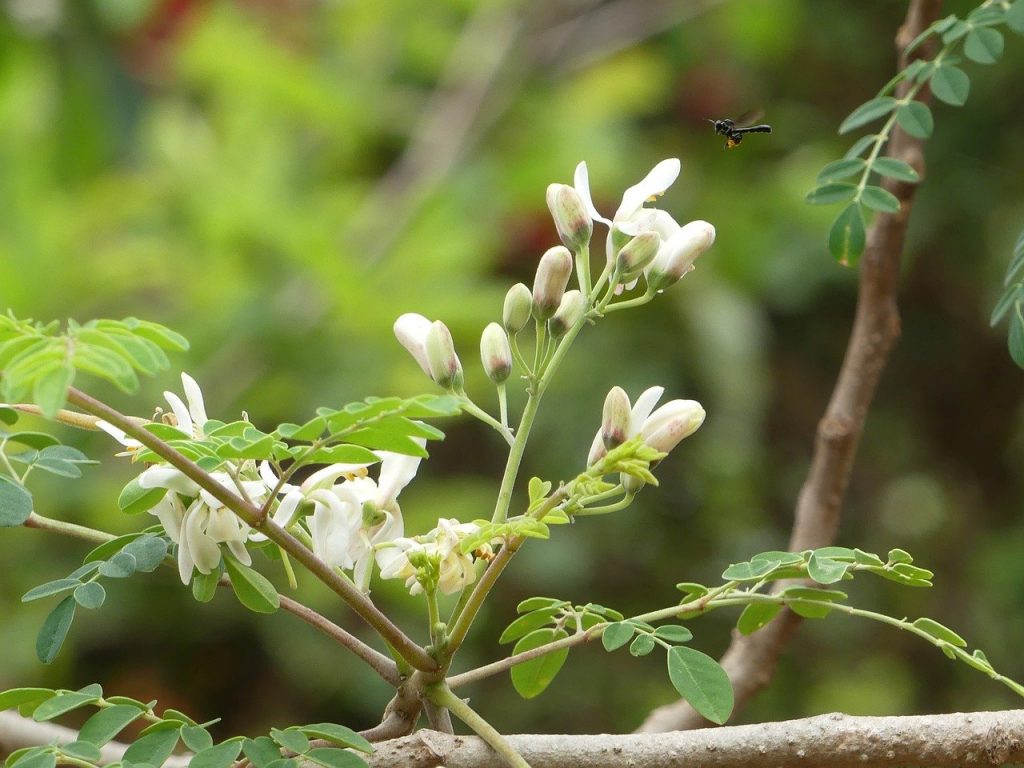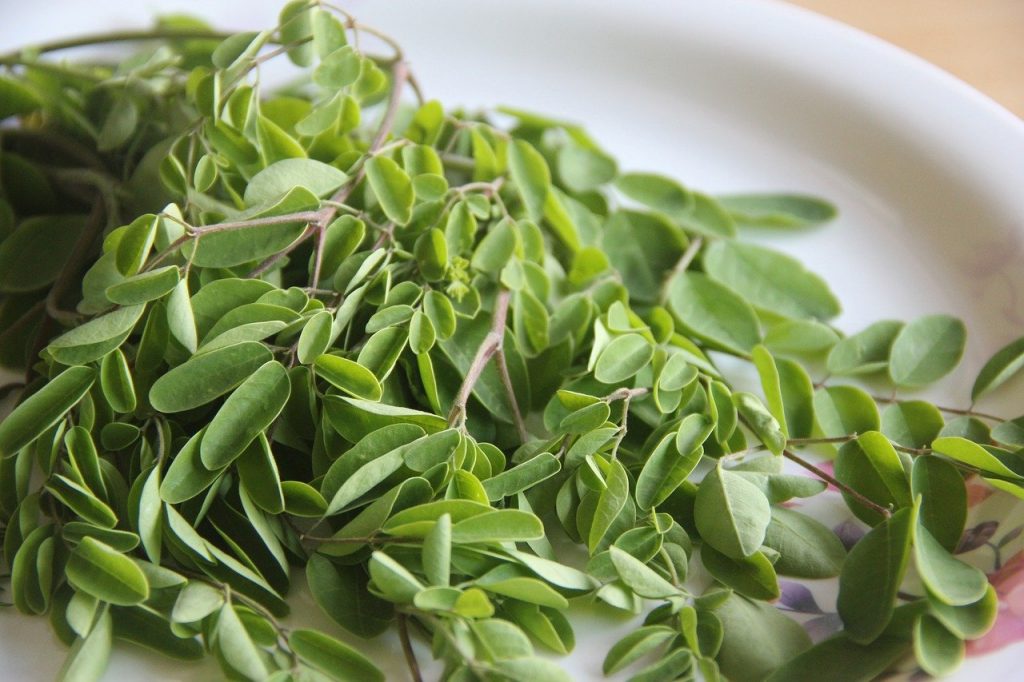Moringa Tree

Moringa trees, also known as Ben oil or drumstick trees, are fast growing, hardy, warm-climate trees. They require temperatures above 40 degrees Fahrenheit to thrive. However, if your area is prone to frosts or cold winter temperatures, you can grow a moringa tree in a container. Because it has an exceptionally long tap root, and this tree is not a beginner plant. Here are three reasons to grow a moringa tree:
- Leaves, blooms, and the long bean-like seed pods are edible.
- The leaves are a salad super-food filled with a variety of vitamins and minerals.
- They grow extremely fast, and do well even after pruning.
Moringa Trees
- Fast Growing Trees –
- A Natural Farm –
Planting and Care
Planting instructions

Moringa trees grow best from seeds, but they can be grown from cuttings. To grow from seed outside, prepare a seedbed that drains well, and is in a sunny location. Moringa trees need at least six hours of direct sunlight per day and will tolerate more. Water the seed bed thoroughly, but make sure that the water drains away. After the initial planting, water near the seedling (but do not water it directly).
You can plant a cutting vertically or horizontally. The base of the cutting should be about as big around as a thumb.To plant vertically, cut a straight twig with several buds near the bottom end of it. Prepare a bed, as if you were going to plant a seed. Using a different stick, drill a narrow hole into the loose soil, then insert the cutting.To plant horizontally, prepare a long bed. Cut a limb piece that has several bud nodes on it. Place it in the prepared bed.
Moringa trees are not fond of being transplanted because they have an exceptionally long tap root. This tap root is one reason a moringa tree is resistant to drought. With this in mind, they will do best in a tall planter that has excellent drainage holes at the bottom. Water lightly, keeping the soil on the dry side especially after the seed has sprouted or the cutting has put up shoots. If the leaves begin to yellow, your moringa has probably been over watered.
Watering and nutrients
Moringa trees do very well in arid locations such as Arizona. They require very little water and prefer a sunny space that is well-drained. When it comes to nutrients, they will do nicely on a vegetable compost applied as a top-dressing.
Pollination

It is a good idea to have several Moringa plants if you would like for them to produce seed. They are dichogamous, meaning that the stamens and pistils will mature at different times. Such trees do better if they are cross-pollinated with other trees. They are attractive to bees and similar pollinating insects. However, pollination is not essential if you are primarily growing them for the leaves.
Pruning
Moringa trees grow exceptionally fast and can handle heavy pruning. In fact, pruning your moringa tree back almost to a stump at the end of the growing season will encourage it to put out several branches. This will keep it bushy and short enough for easy harvesting.
Pests, diseases, and animals
The leaves of the moringa tree are spicy (like horseradish). This tanginess is appreciated add a pleasant kick to blander foods, but insects and nibbling mammals tend to dislike it. This is good news if you want food for you and not for caterpillars or rabbits.
Harvesting

The leaves can be harvested at any time. They can be eaten in salads, run through a juicer, or dried to use in soups, stews, or even made into capsules to be consumed like vitamins. The buds and blossoms are also edible, although they need to be lightly cooked before eating. They are high in several varieties of flavonoids (some of which might act as an abortifacient and should not be eaten by those who are pregnant).
When they snap crisply, the long pods can be eaten like a green bean.. They are usually added to soups, stews, or curries. Although most parts of the Moringa tree are edible, you should not eat the bark or the root as they can paralyze the nervous system and even cause death.
Frequently Asked Questions
When is the best time to plant a Moringa tree?
Moringa trees love warm weather, so late spring or early summer are ideal planting times for outdoors.
Do Moringa trees have medicinal applications?
There are more than 300 Ayurvedic applications for various parts of the Moringa tree. Some believe there is a possibility that it might be useful in curing or preventing cancer. Various parts are used in folk medicine.
Is there any place where you should not plant a Moringa tree?
The moringa tree is classified as an invasive species in Florida. Even though the damp conditions in that state are not ideal for Moringa trees, they grow rapidly and can crowd out native species.
Can you eat the seeds of the Moringa?
Moringa seeds can be lightly fried and will sometimes pop like popcorn. However, unlike popcorn, they can have the same effects as a laxative, so eat only a few at a time.
Where do Moringa trees come from?
Moringa trees originate in India, but have spread to many tropical areas.























0 Comments